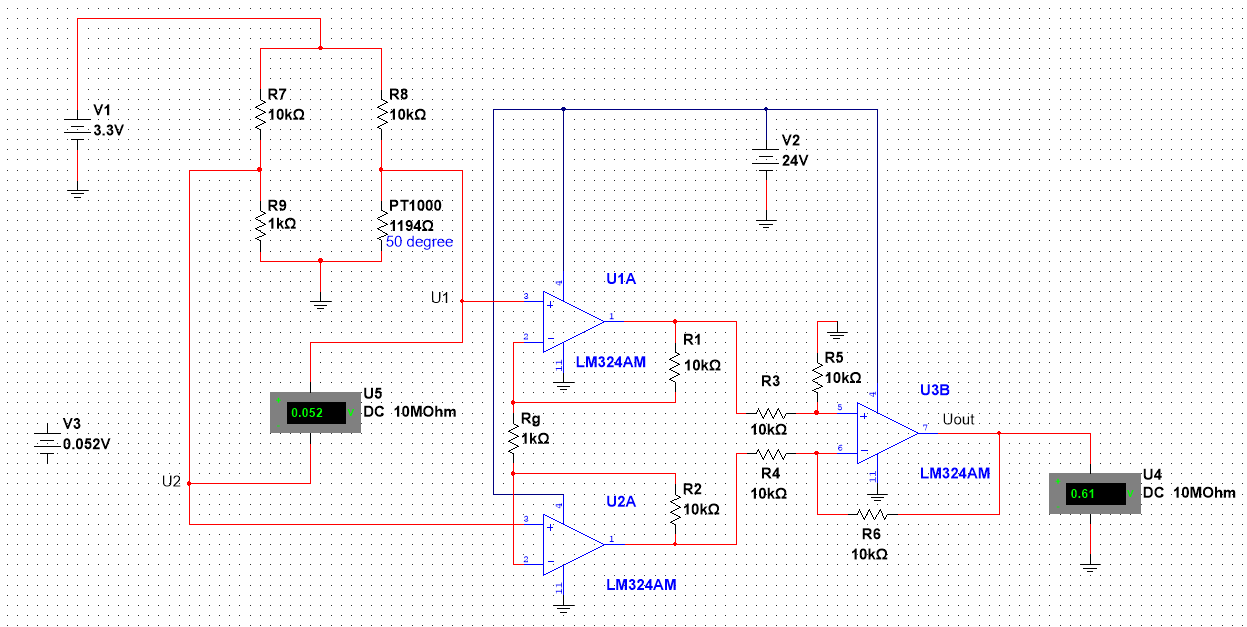I measure an output of 0.61 V from the instrumentation amplifier. The gain of the amplifier is set to 21. The formula for the output is given by: Uout=(1+2R1/Rg)×(R3/R2)×(U1−U2) Given an input of 0.052V, I would expect the output to be: 0.052×21=1.092V... Why am I observing a different value?
When I set it up with an external voltage difference, which is also 0.052V:

I get the expected output signal. So, why is there a discrepancy when using the Wheatstone bridge? Is there something I can adjust to get accurate readings with the Wheatstone bridge? Or is there another method commonly used to measure temperature accurately?
I'd like to note that the behavior on the breadboard matches what I observed in the simulation, and I have tried with different op amps.
Update:
Thank you for the replies everyone,
I've tested the alternative circuit quite a bit and so far, it seems to work really well. (Both on breadboard and simulation)
Regarding the low current at the output, would this be an issue when the output is only going to an ADC (MCP3464)? There shouldn't be any current going into it, right?
I'll be measuring temperatures typically ranging from -20 to 200 degrees and have set the extremes to -45 to 300. (so that the bridge is balanced at -45). Using OP1A and OP2A as buffers, will this cause any problems? Isn't it better to have them here as a "current stopper"? I have also adjusted the gain to 10 to match the ADC, and increased the resistors in the differential amplifier as stated :)
I'm relatively new to electrical circuits, so I really appreciate all the help :)





